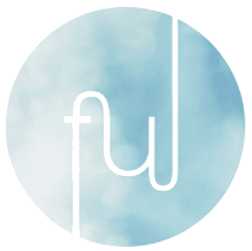Your physically felt body is in fact part of a gigantic system of here and other places, now and other times, you and other people – in fact, the whole universe
(Gendlin 1996).
Our body is much more than a physical body. Our body consist with layers rich of information and has a direct connection with the universe and other levels of existence. A connection with these extended fields happens through the felt sense. The felt sense enables us to connect with the physical experiential field, which is part of a more extended experiential field.
The word Spirituality itself evokes many personal associations, and has different definitions and perceptions from one person to another. In this article, I use the word spirituality as the ability to experience existence as a large, expanded interconnected field going beyond our mundane existence. A field that is nurturing and supporting to our process steps towards experiential change and healing in the here and now.
Connection to these extended fields happens through the body. The gate is the felt sense – a bodily experience that becomes more distinct if attention is paid to it. At first this sensation is not clear, obscure, vague. It contains the experience of the whole situation, which is felt (usually) in the middle of the body. This experience contains the implicit and further information and movement that become more and more clear by images, new words and new understanding. (Gendlin, 1996, 1997).

“The word “implicit” is used as a philosophical concept by Gendlin. He illuminates how the implicit function in experiencing and how our current experiencing is carried by the organism on a bodily level as an intricate , yet to be differentiated mesh of potential meaning. The implicit function outside of our awareness and includes one’s past, present, and future direction, as well as our partnership in a extended awareness, all felt together as one whole. The implicit includes our participation in the larger consciousness that moves through all things”. (Doralee Grindler Katonah).
Hence the human body plays an important role in the development of the spiritual awareness. When we are present with what we feel, there is the possibility to be in touch with the extended bodily field which includes the environment and other fields of knowledge, (such as contemporary history and history from a previous life and other places, and more). The extended body allows new meanings related to the subject itself to move in the here and now in a process of change. Whilst connecting to the felt sense, we can connect with a lavish space which includes our history, our present situation and steps that carry forward our life energy. Thus space is created for acceptance of the sublime and mysterious, for the possibility of something greater that supports life and allows processes of change and healing to happen.
Two years ago I wanted to register to a senior focusing teacher’s workshop who came to Israel. This workshop was a continuation of the workshop that I attended years earlier. Registration began two months in advance and I applied to register. During the telephone conversation something inside me twisted. Without understanding what it was, I found myself asking a question which is not typical to me – “Can I be acquitted on the cost of the workshop if I could not attend it?”. Something inside me knew that it is better not to enroll now … I decided to listen to the inner sense, although I did not have any legitimate reasons for this….
Two months later I find myself sitting in the waiting room at Carmel Hospital, while my father goes through a catheterization procedure . In the tense silence of waiting outside the operating room, I suddenly realized: “now, right now, the workshop with the senior teacher from abroad takes place!”. Two months earlier in that phone call, something inside me knew, felt, that I would not be able to participate .. that I would be needed in another important place ..
When we are open to the extended experiential bodily field, help arises. Steps, that we could not think of or plan by our usual means, appear. Steps that contribute to the inner healing. This connection allows for new meanings to arise in us and to expand our personal healing abilities. You may say, when this extended field is felt and sensed, important information becomes available and there is a significant expansion of the self and the meaning of life.
I sit in front of a woman named Shira. Shira lost her son in a military action. Pain is in the room. Sharp, black and downward pulling. She describes it as a black hole, that is really hard to withhold from falling into and on the other hand there is the desire to fall into it and give up. I ask her gently to be present with these two opposing movements in her: the one that wants to give up and fall, and the other movements that wants to safe herself and be safe.
Deep heaviness is in the room. A tough feeling. It is important to me to be there for her in this place. In her life, outside the consulting room, she does not dare to impose that on her surroundings. I invite her to give place to this weight that she carries within her. I ask her if it is possible to allow a more extended field to support her in bearing this great pain….. To feel that she does not have to bear all this alone.
It takes a few moments … It is possible for her. A small breath appears. Something becomes a bit more spacious. Suddenly two birds appear on a branch of a tree by the window outside the room and begin to twitter. Paying attention and recognizing the birds, Shira tells me it is a pair of Pycnonotus and that it feels as if they are having a love talk. It seems there is a relationship and love between these two birds.
We are briefly with the chirp, with the music that the birds bring into the room … Something has changed. “It’s easier for me,” Shira says, adding: ” life is calling me … There are children who need me …” And I look at Shira and feel a life energy pulsating in her again, flowing. Something blocked was lifted. The birds vitality met with her life force …
In focusing we learn to connect to this experiential field. Moreover, we experience again and again, that our “I” is bigger and wider than all the issues we carry within us. Key to the focusing process is giving attention to the bodily sensations about the issue. The felt sense is a distinct experience, and carries a wide range of potential significance, even when it is still unclear. Giving attention to the felt sense allows new meaning to become clear and new symbols to emerge. When the felt sense is given space, recognized, and acknowledged, it opens a space between the “problem” and the person. Gendlin described this space as a place of wholeness, separated from our problems.
This is an internal space, as you can feel it in the process of “clearing a space” (the first step in the process of focusing, which in itself stands also on its own), but is also found in the interaction between therapist and client. When the therapist knows how to be connected to this space, where there is “nothing in between”, no judge, no interpretation, no professional idea (although they can be important in some phase in the therapy), just opening a space for what wants to come in the matrix’s of the process, and allowing it to exist, in wholeness and connection to extended fields. Hence a whole world can open up for the client’s life processes, (and for the therapist as well in some way).
The therapist listening quality is significant, and the base of the experiential work and the extended fields of spiritual dimensions. The quality of listening contains silence and respect for the process and the individual himself. It contains qualities of empathy, acceptance, gentleness and patience for the step by step unfolding bits and pieces of the process. Without interrupting the process nor being pulled into interpreting and determining into conclusions. The quality of the listening invites friendliness to whatever comes. The basic attitude is that the ‘knowing’ of the healing steps, is contained within the client. The direction of healing and possibilities of change are within the process itself. The therapist supports the process allowing it to evolve and happen.
The therapist invitation is to be in contact with the body and what is experienced in it. There is an invitation to slowdown, in order to be in contact with the inner experience and what comes out of it. In this slowing down there is a shift from the state of action (doing) towards the state of being, which allows the listening to something new. The therapist invites the client to be in this state and to allow the arising of a new space.

Carl Rogers, in his later years, spoke about the significance of spiritual moments in psychotherapy. He was a master in creating conditions that allow a place for sanctity in relationships. Later in his life he became more and more intrigued by the sacred moments that occurred in the therapeutic encounter. (Mia Leijssen, 2008). “I feel at time when I’m really being helpful to a client of mine…there is something approximating an I-Thou relationship between us, then I feel as though I am somehow in tune with the forces of the universe or that forces are operating through me in regard to this helping relationship” . (Rogers, 1989, p 74).
Gendlin shed more light, by adding to this approach the role of the body and physical sensation as part of the wider awareness development, and implemented the concept and process relating to the felt sense, allowing a wide field of healing and meaning in the experiential space of contact. Referring to the felt sense Gendlin talks about the verge of consciousness – a sense that there is more then what one says or knows, when the shift occurs into a new space where new information can emerge. This understanding teaches how the implicit, within the felt sense, is formed through our interaction with it, revealing itself to our consciousness and creating a sensation of the whole. According to Gendlin, we have the ability in our innate nature to sense the environment directly, just as plants and animals sense their environment, affected by it and affecting it. Often we are not able to sense our environment directly because of our patterns and convictions, our need to label and arrange information. These barriers stand between a person and the immediate experience, where everything is fresh, alive, flowing and connected to the universe. Many people, are very remote from themselves and the therapeutic process allows them, step by step, to open again these channels of contact with the world.
Focusing oriented therapist, allow life processes to be and move forward. This is a holistic approach, different from perceptions that define and conceptualize by categories. When a person feels stuck in a certain area of his life, it is not approached as a concept or content. It is seen as a difficult experienced part within the greater life process – a process that was blocked from evolving. We need to help the process to slowly come back to the flow of life, and as in every experiential step, options we could not think of in advance, arise and allow something else to move forward.
Focusing therapy allows us to be in moments of intimacy, that no other way can allow. The therapist has the opportunity of meeting with the inner story, with the vague and clearer feeling, with the emotion, step after step. These are moments of spiritual grace – a touch of life’s sanctity. In this therapy the intentional focus is on the sanctity of the process itself, together with a deep respect for the unknown and for the significance of events. This intention comes from the belief that what one feels or experiences can be part of one’s life process, including construction and development, and that possibilities can arise from the process itself. There is no rush to solve problems, but instead an allowing of arising of what not yet has been formed. Psychotherapist relations and the experiential process point toward a deep process, that knows that there is something beyond us. In this process there is the belief that the human is basically a spiritual being, who can under certain conditions move forward with the energy of creation and vitality.
“Our experiences in therapy involve the transcendent, the indescribable, the spiritual. I am compelled to believe that I, like many others, have underestimated the importance of this mystical, spiritual dimension” (Rogers, 1980, p 130). In his portrayal of the “person of tomorrow” Rogers come forward with his yearning for the spiritual as he describes this person as a spiritual seeker -…this kind of person wishes to find meaning and purpose in life that is greater than the individual….
As therapists, we must understand that spirituality is not a subject or a methodology that should be integrated into the therapeutic field separated from the therapy itself. It exists in the interactive field in the encounter between therapist and client. Using this spiritual interactive extended field may enhance therapeutic process and deepen the wonders of this world.
Sources:
Gendlin, E.T. (1981) focusing. Bantam Books
Gendlin, E.T. (1996). Focusing oriented psychotherapy.Guilford Press
Gendlin, E.T. (1997). A process Model. New York. Focusing institute.
Doralle Grindler Katonah. Clearing a space. In Joan Klagsbrune, The Sacred Art of Psychotherapy: Spiritual gateways for Therapist and client (2011). Selected paper.
Mia Leijssen (2008). Encountering the sacred: Person centered therapy as a spiritual practice. Psychology Department K.U.Leuven, Belgium
Rogers, C. R. (1980) Way of Being. Boston: Houghton Mifflin
Rogers C.R. (1989) a new psychotherapy. In H. Kirschenbaum & V. Land Henderson (Eds). The Carle Rogers reader (p. 63-76)
The author, Ifat Eckstein, MSW: Senior member, Israeli Association of Family & Couple Therapists; Academic Coordinator & Lecturer, Shiluv Institute; Israeli coordinator of the International Focusing Association. In 2017, Ifat established Widefulness – Multidimensional Psychotherapy as a base for the teaching, development and practice of spirituality in psychotherapy.


